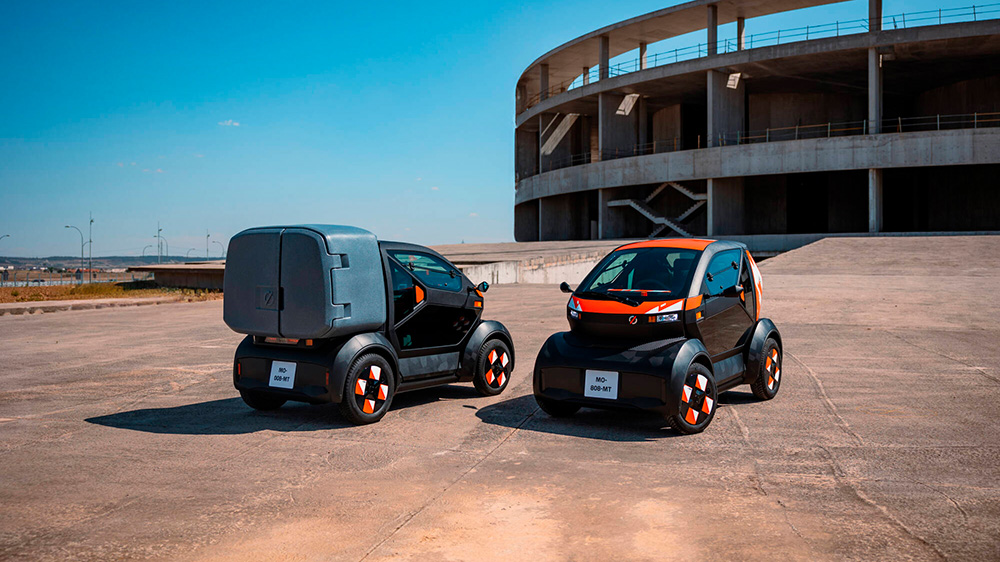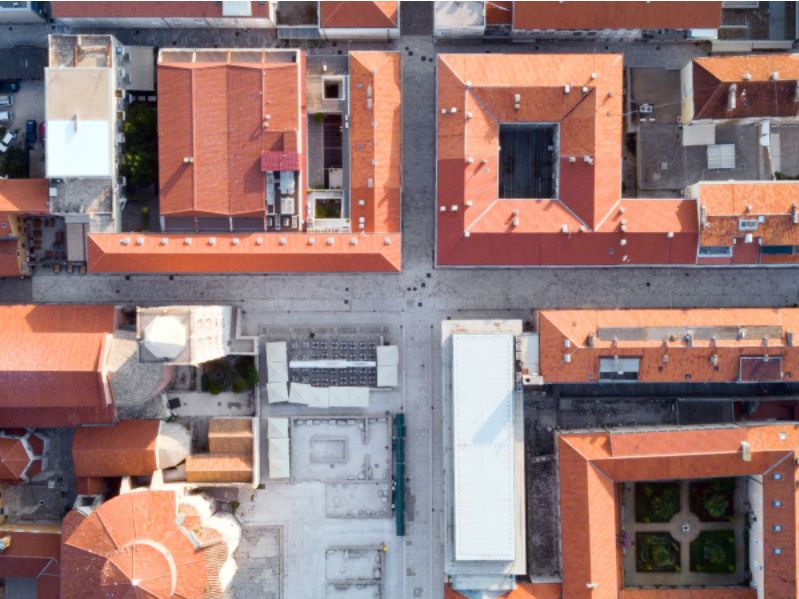1) fast lane recharging stations: taking a break along the way
When they are installed on fast lanes, such as motorways or trunk roads, charging stations offer high power, of at least 43 kW, suitable for a short break. The Mobilize Fast Charge ultra-fast charging network will soon be offering 200 new stations across Europe, so there’s no need to worry about running out of power! Fast-charging stations can charge electric cars in less than thirty minutes, enough time to go from almost empty to almost full. That’s enough time for the driver, too, to recharge personal batteries before getting back on the road. Note that the cost of electricity delivered in this way is higher than that of a slower recharge, because the price per kW/h is closely linked to the power of the current.
Fast-charging infrastructures generally deliver direct current (DC), and electric vehicles designed for road use are equipped with DC chargers. For example, thanks to the high recharging power provided by their DC chargers, Renault E-TECH Electric, Megane and Zoe can be recharged as part of a natural journey. Whether you’re going on holiday or on a long business trip, long road journeys are punctuated by breaks that allow you to rest and have something to eat. On the motorway, fast charging of the Megane or Zoe E-TECH Electric makes the most of these stops to recover, in just a few minutes, enough range to reach the next stage or the final destination.
2) electric charging points in shopping centres: charging your car in hidden time
Why not fill up your electric car at the same time as your shopping? It’s all the more appealing because the charging points in the car parks of supermarkets and shopping centres are cheap or even free to use. For many retail chains, recharging electric cars is shaping up to be the “new wifi”, in other words, an essential service for their customers on a daily basis.
Retailers are already meeting this demand, or preparing to meet it, in a variety of ways: with conventional alternating current (AC) charging points, generally between 7 and 22 kW, and with fast direct current (DC) charging points, capable of releasing power in excess of 50 kW. The more powerful the charging point, the faster the recharging rate for the motorist, but the more expensive it is for the retailer to set up. The power for each chargepoint is therefore tailored to the average parking time at the site. By way of example, the Renault Megane E-TECH Electric recovers up to 160 kilometres of city driving in an hour’s charge on a 22 kW AC public charging point, while the Dacia Spring needs less than an hour to recharge to 80% on a 30 kW DC charging point.
3) on-street charging points for electric cars: recover range with every parking space
The figure of 800,000 public access charging points in Europe is impressive but conceal many geographical disparities. By expanding on-street charging networks, local authorities are playing an important role in the development of low-carbon mobility. Deploying these public infrastructures makes it easier for users of electric or hybrid vehicles to recharge their cars, especially city dwellers who have neither their own parking space nor – a fortiori – their own recharging solution. City centres offer opportunities for recharging on the street or in car parks, often with free parking. So you can use a meal in a restaurant or a shopping break to recharge the battery in your electric car. And for the future, Mobilize Iléo Concept is proposing an urban layout where you can recharge your vehicle while sitting out of the weather or in a heatwave.
The charging points for electric vehicles found on the public highway deliver alternating current (AC) with a power ranging from 7 to 22 kW. The Twingo E-TECH Electric simply takes a half-hour break connected to a 22 kW station to regain around 80 kilometres of range, and the Zoe E-TECH Electric recovers up to 125 kilometres of range in 2 hours of charging at an 11 kW station, for mixed journeys.
4) reinforced socket or wallbox: benefit from a home charging station
What could be nicer than not having to make a diversion to the service station or queue to fill up? With electric mobility, every private place can potentially be transformed into a “petrol station”, whether it’s the house where you live, the company building where you work or, why not, your grandparents’ house, where you spend the day. While plugging your car into a conventional power socket is not advisable, it’s easy to install a reinforced 3.2 kW socket, or even a wall-mounted charging point, also known as a “wallbox”, capable of delivering power ranging from 3.7 to 22 kW in alternating current (AC). Mobilize Power Solutions‘ services support both private individuals and professionals in the design, installation and maintenance of their own recharging solution.
The vast majority of electric car recharging is carried out at home, in private homes or shared ownership, with full recharging often taking place overnight. For a Dacia Spring, for example, it takes less than nine hours to charge from 0 to 100% on a 3.7 kW wallbox, and less than fourteen hours on a 2.3 kW domestic socket. The Renault Megane E-TECH Electric, meanwhile, recovers up to 400 kilometres in mixed driving in eight hours on a 7.4 kW wallbox. As well as the obvious convenience of this charging method, it’s also a particularly economical way of filling up. When you’ve got all night ahead of you, you can make do with a slow charge, i.e. low power… at a low cost! What’s more, home charging can be easily programmed to start when the electricity rate is at its lowest, if your contract includes off-peak hours. They can even take advantage of smart charging, which adjusts the rate at which the vehicle is charged according to the availability of electricity on the grid, so as to consume the least carbon-intensive and cheapest energy possible. The Mobilize Smart Charge application takes care of everything.
Mobilize offers recharging solutions to suit everyone’s day-to-day needs, from private individuals and businesses to mobility professionals in the car-sharing and chauffeur-driven car sectors. So electric mobility is a matter of course for everyone.






